High on the cliffs along the southern coast of Cyprus lie the ruins of the ancient city of Kourion, likely built in this location for its fertile land and stunning views. Its elevated position offered both protection and a panoramic outlook over the landscape.
The origins of Kourion
According to Greek historians, Kourion was founded by the Achaeans in the 13th or 14th century BC. However, the first written mention dates back to 673 BC, and archaeological finds show that the area was likely inhabited long before that. Kourion covered a large area, including fertile land around the Kouris River and parts of the Troodos Mountains, known for wine production.
Kourion underwent significant changes under Alexander the Great, who abolished city-kingdoms and introduced local democratic ideas. The Hellenistic and Roman periods were marked by architectural and cultural prosperity. Later, the transition to Christianity became visible in the buildings and several mosaics. Kourion remained an important city well into the Byzantine period.
Visiting Kourion in Cyprus: what to see
I visit Kourion during a five-day road trip through Cyprus in November. It’s a sunny afternoon and the low sun casts a warm glow over the ruins and the surrounding landscape, creating a nearly painterly atmosphere. It’s wonderful to wander among the ancient remains, trying to imagine what life must have been like here. You do need a bit of imagination to bring the ruins to life, but with a good description, you’ll get a long way. In this article, I’ll tell you more about the sights to see in Kourion.
Visitor center of Kourion
The visitor center is located next to the large parking area. Inside the building, you’ll find a scale model of Kourion, which gives a good impression of the size of the ancient city. When you exit the center and walk straight ahead, you’ll immediately reach the first excavation: the House of Eustolios.
House of Eustolios
The House of Eustolios was originally built during the early Roman period. It underwent major renovations in the 3rd and 4th centuries. What you see today is the result of extensive modifications carried out in the first half of the 5th century. This was a typical Roman villa, with an inner courtyard surrounded by columns. Several important mosaic floors have been preserved. These mosaics reveal Eustolios’ connection to both paganism and the (at that time) emerging Christianity.
Amphitheatre
The amphitheatre of Kourion, which could hold around 3,000 spectators, was probably built at the end of the 2nd century BC. After several devastating earthquakes in the 1st, 2nd and 3rd centuries, the theatre was restored multiple times. Following its final destruction, it was completely abandoned in the 4th century. Today, you see a theatre that has been largely reconstructed. Performances and concerts are still regularly held here.
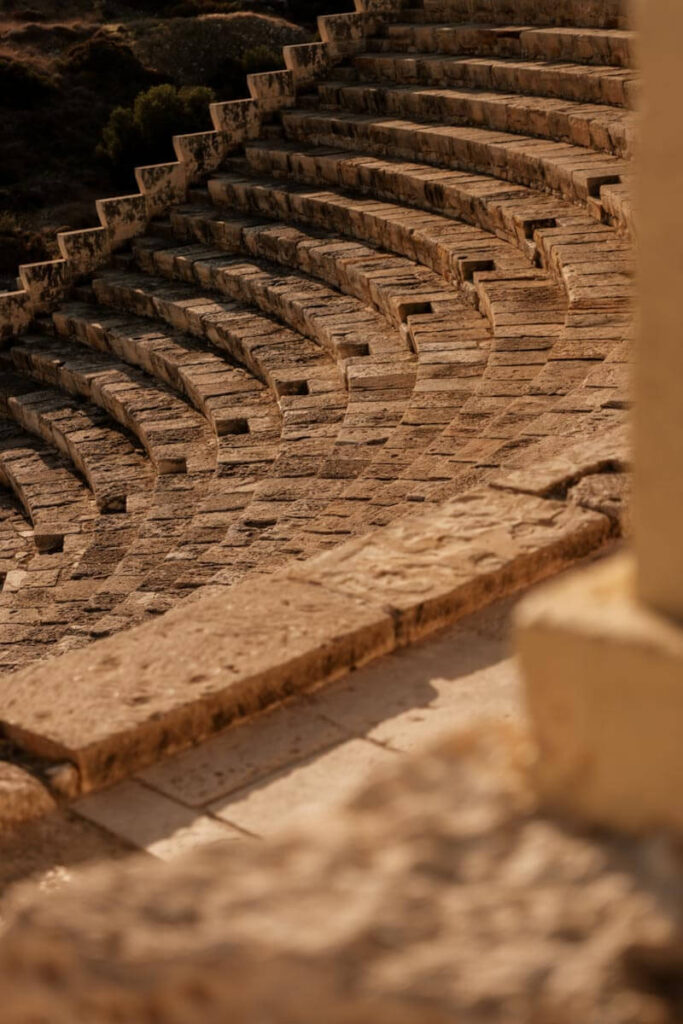

The agora
The agora was the vibrant heart of Kourion during the Roman period. It served as a central meeting place for trade, social gatherings and political discussions. The agora was built in the 3rd century AD on the foundations of older structures.
The stoa
The stoa in Kourion was likely constructed at the end of the 2nd century. It was an impressive colonnaded gallery on the eastern edge of the agora. This structure provided a covered area where residents and visitors could gather, sheltered from the intense sun or rain. In classical antiquity, stoas often played an important role as spaces for commerce, philosophical discussions and social interaction. At the beginning of the 5th century, the stoa was replaced by several early Christian buildings.
The northeastern Hellenistic public structure
This is the oldest structure excavated in Kourion. Only the foundation of the southern exterior wall and the lower parts of a few interior partition walls have been preserved. Located close to the agora, this building likely served as a multifunctional space for administrative, political or religious purposes.
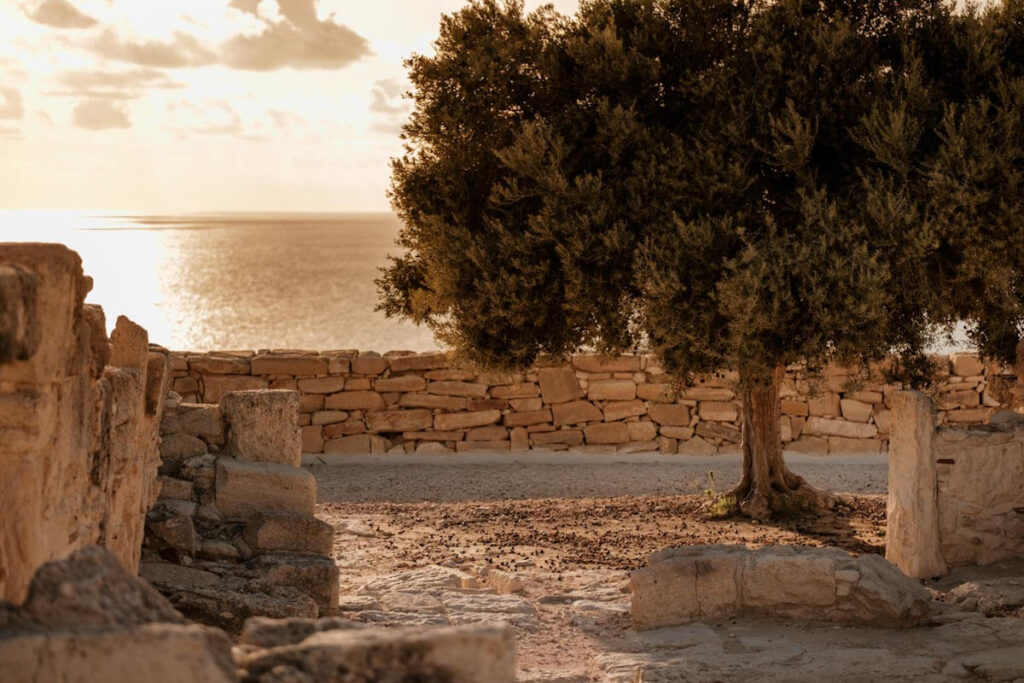
The Roman nymphaeum
The nymphaeum was dedicated to the water nymphs. The structure was adorned with marble elements, reliefs and statues, which testify to the wealth of Kourion during the Roman period. Although most of the decorative elements have been lost, you can still clearly see the basic structure and water channels. It was built in the 1st century and destroyed in the 7th century during the period of the Arab invasions.
The House of the Gladiators
The House of the Gladiators was likely a luxurious private residence. It got its name from the images on the mosaics that were uncovered here. It was built on the northwestern edge of the hill in the second half of the 3rd century. After severe earthquakes in the 4th century, the House of the Gladiators fell into disrepair.

The House of the Earthquake
If you climb the hill of Kourion to the left of the bend in the access road, you will have a view of the House of the Earthquake. It was built in the late 1st or early 2nd century, renovated in the mid-4th century, and completely destroyed by the great earthquake that occurred in 365 AD. In the ruins of this house, an image of daily life in Kourion at the time of the destruction has been preserved.
The House of Achilles
The House of Achilles from the 4th century is located at the far northwest edge of the hill. Beautiful mosaic floors depicting pagan themes have been preserved here. This building may have been used as a reception area for formal visitors, as it was located near the entrance to the city.
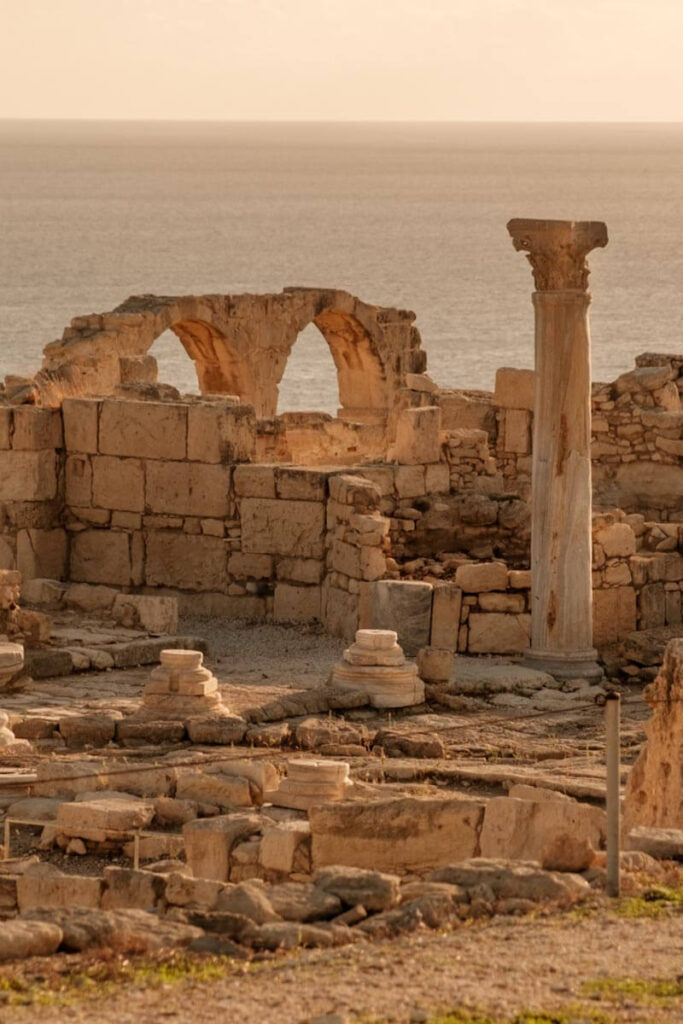
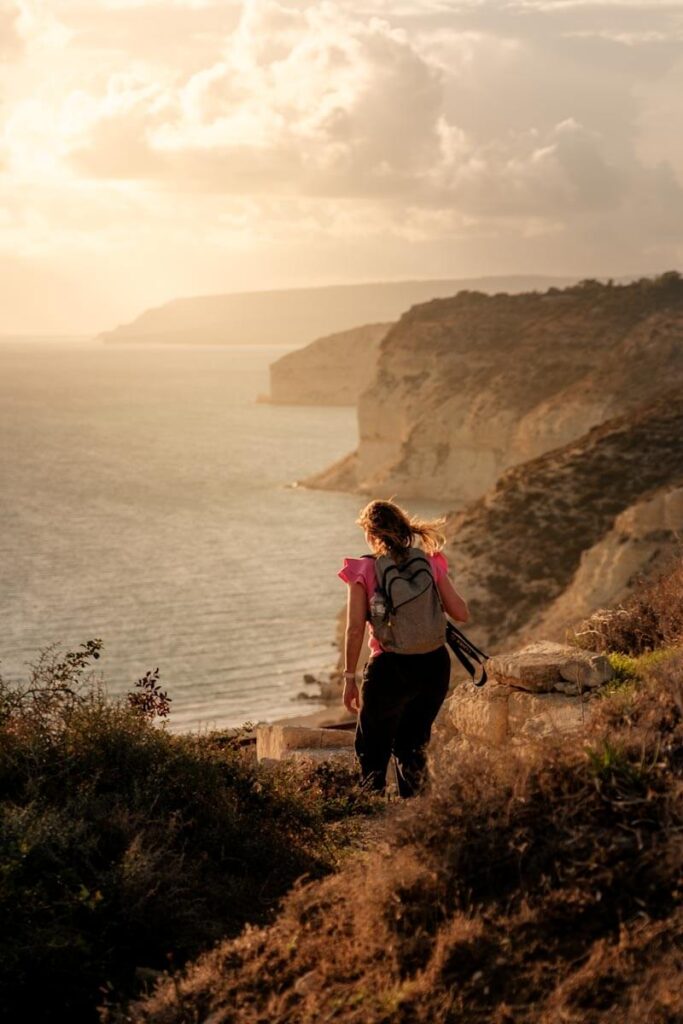
The Early Christian Basilica
The early Christian basilica of Kourion was built in the 5th century and served as an important religious center during the transition to Christianity. The three-aisled church was decorated with mosaic floors and marble details. The basilica included a baptistery and other annexes were also present, highlighting the central role the basilica played in the religious life of the community.
What is the cost to visit Kourion?
An entrance ticket for Kourion costs €4.50 (2024). You can purchase a ticket at the ticket office next to the barrier. It is a bit inconvenient, as you will already be at the barrier in your car and need to step out briefly. Parking is free.
Kourion or Paphos?
The excavations of Paphos and Kourion are the two most famous sites on Cyprus. Paphos is a UNESCO World Heritage Site and is famous for its beautiful Roman mosaics. It was an important religious center dedicated to Aphrodite. Located near the modern city, it attracts many visitors. Kourion, on the other hand, combines impressive architecture such as a restored theater with spectacular views of the coast. While Paphos excels in detail and decoration, Kourion offers tranquility and breathtaking landscapes. The choice is yours. Or you can just visit both!
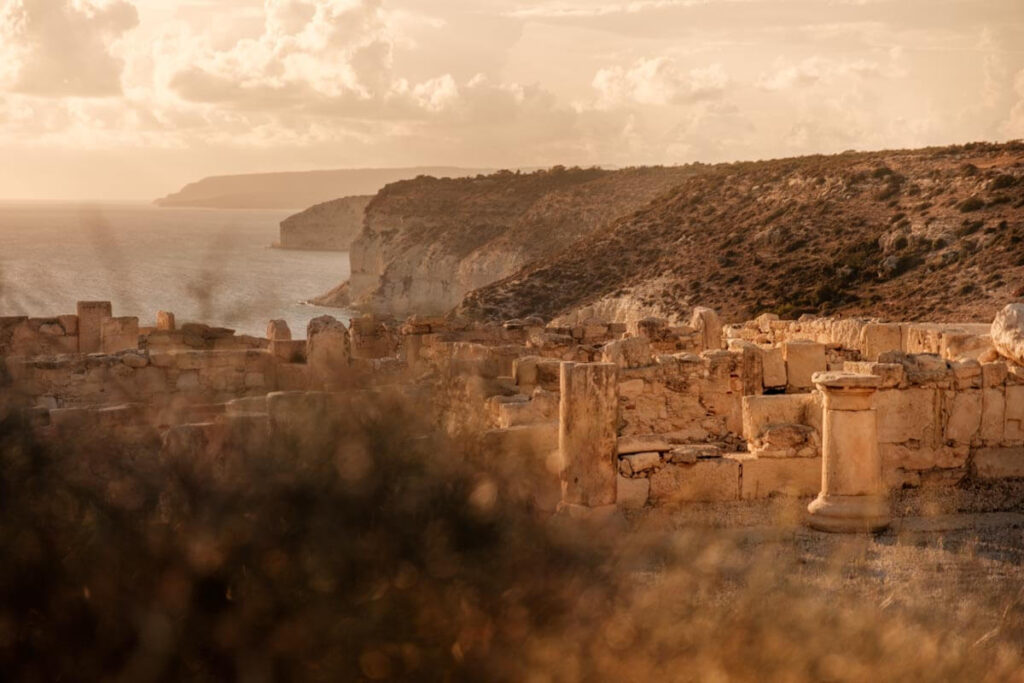
Combine a visit to Kourion with other beautiful places on Cyprus
Kourion is located on the southern coast of Cyprus, so a visit to the excavations can easily be combined with other nearby attractions. My recommendations are: the Edro III shipwreck, Aphrodite’s Rock, the Bridge of Love and flamingos in the salt lakes. If you’re heading inland, visit the beautiful villages in the Troodos Mountains. Don’t forget to stop at the church of Saint Nicholas on your way there, which is partially submerged for much of the year, leaving only the bell tower visible. The Venetian bridges in the mountains are also worth seeing. Want to learn more about the history of the Cypriot issue? Drive through Agios Sozomenos, for example, on your way to the capital Nicosia. Planning to explore the pristine northwest of Cyprus? Be sure to check out the cool Limni Pier. There’s plenty to do in Cyprus!